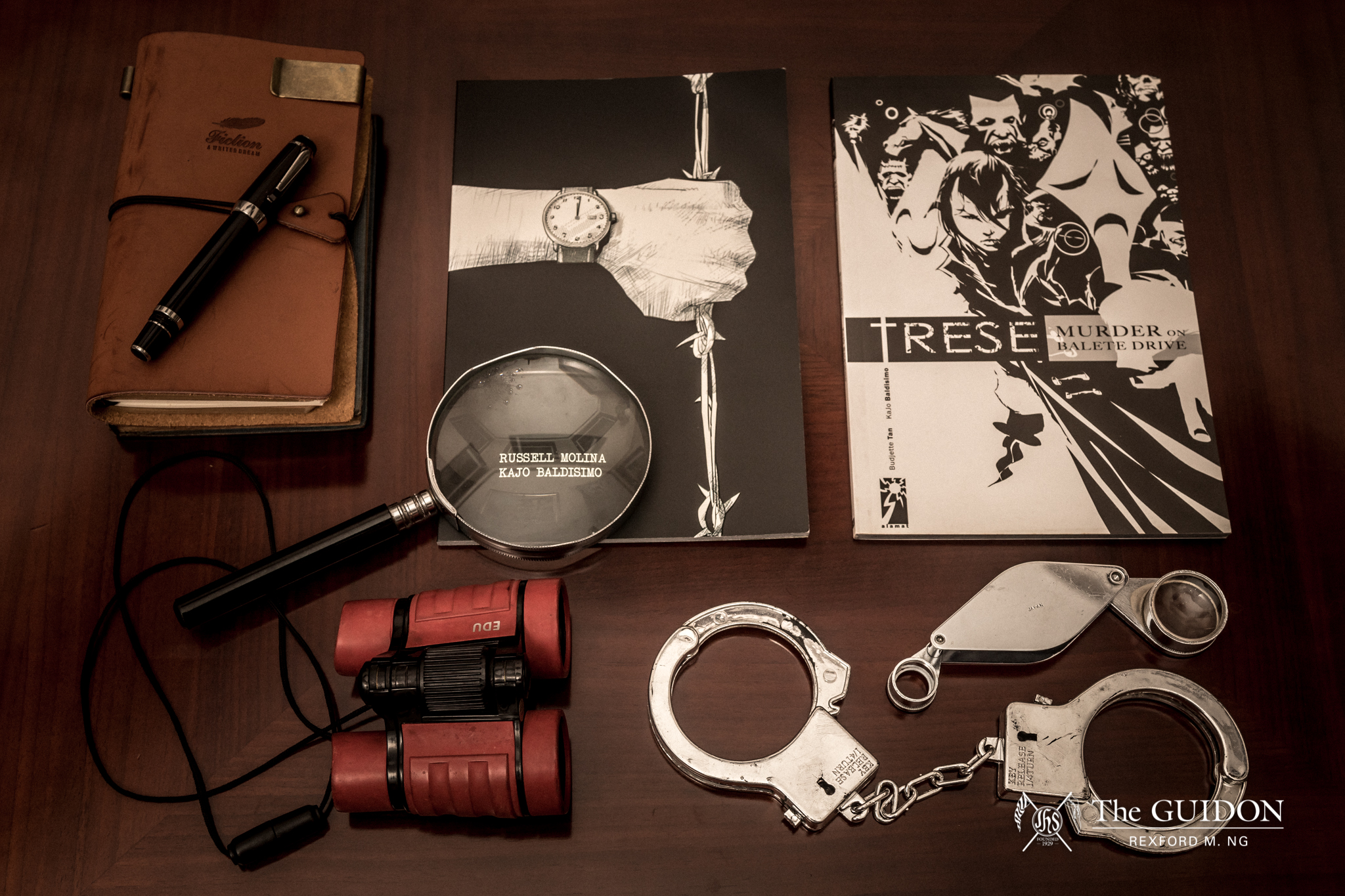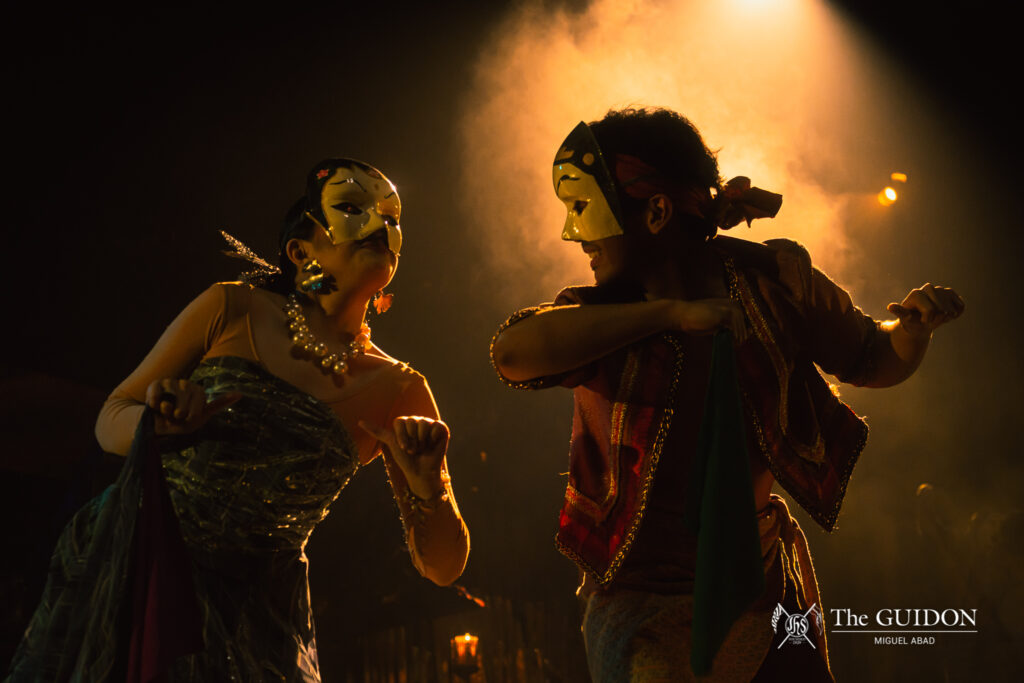When Smaller and Smaller Circles author F.H. Batacan submitted the very first copy of her novel to the Carlos Palanca Memorial Awards in 1999, she had no expectations for the success that came after. After winning the Grand Prize for the Novel in English, the then 155-page novel went on to win more awards such as the National Book Award in 2002 and the Madrigal-Gonzalez Book Award in 2003. It was also republished both internationally and locally in 2015 with 353 pages. Earlier this month, the movie adaptation was released under TBA Studios (composed of Tuko Film Productions, Buchi Boy Entertainment, and Artikulo Uno Productions), the same team that brought 2015 blockbuster Heneral Luna to life.
Batacan’s story is one of many works that have pushed the envelope of crime novels and challenged the conventions of local content. These kinds of stories come in different shapes and sizes, and authors have integrated the genre with other elements such as the supernatural, gore, and horror to give their stories more dimension and room to play. The Filipino crime genre is an open playing field with a variety of options to explore apart from the world of Fr. Gus Saenz, SJ and Fr. Jerome Lucero, SJ—and these books may be a good place to start.
Dwellers by Eliza Victoria
In one tightly written package, Dwellers ties crime with paranormal elements. This is a tale of body snatchers who take over the lives of two brothers. Unfortunately for the snatchers, the brothers are far from innocent victims, not when a girl’s dehydrated corpse is found rotting in their basement. The unnamed entities have run away from their own dark secrets, only to walk into a deadlier mystery.
Dwellers keeps the story moving quickly, with chapters (mostly ending in cliffhangers) about two to five pages long. Despite the rush, Victoria’s short-sentenced, first-person prose builds a consistently ominous atmosphere. What Dwellers achieves in pace and accessibility of language, however, cannot wrangle the issues it introduces into one meaningful conclusion, nor fully explain certain character motives. It seems that the book should come with trigger warnings of every kind for the said issues, including graphic eating disorders, self-harm, and sexual abuse—all eventually glossed over as if mentioned just for the shock factor. With that, it’s the edginess bordering on the contrived that makes it difficult to identify—or rather, dwell on—what the novel itself is trying to prove.
Rating: 3.5/5
The Trese komiks by Budjette Tan and Kajo Baldisimo
First published in 2005, Budjette Tan and Kajo Baldisimo’s Trese series is a classic in the 21st century Philippine graphic novel scene. Spurred by the lack of aswang stories set in the city and the natural passing down of Filipino mythology through tradition and generations, the series focuses on titular character Alexandra Trese, a detective who deals with crimes caused by the supernatural in Manila. She is called on by the police and goes through solving the different cases with her mythical support, the Kambal.
Each book consists of stand-alone cases except for Mass Murders where each case is linked. This gives each story enough time to be fleshed out and introduce new or uncommon creatures of mythology in every new case. It is worth noting that not much background to the character of Trese is revealed until the third book, Mass Murders, but this encourages readers to go through the whole series and learn more about her and her past. Even though it’s much darker than a lot of regular comics, the Trese series is a refreshing read for those looking for a closer look on mythology and crime.
Rating: 5/5
12:01 by Russell Molina and Kajo Baldisimo
Albeit not a crime story per se, 12:01 takes on the experience of bandmates who are caught out late after curfew. It focuses on the characters’ trying to make it through the night without getting caught by the Metrocom. A very short read with around 50 pages, the comic is inspired by the very real events that happened during the Martial Law years with allusions to children’s disappearances, repression of journalists, and abuse simply for being out after curfew. In fact, the comic was published merely days before the 30th anniversary of the EDSA People Power Revolution.
The insertion of song lyrics is a creative take on giving perspective to the band’s experience and how Martial Law would affect their lives. Molina also uses ‘70’s slang such as “erpats” to bring more context to the time in which the story is set. Although the length of the comic limits character development, Molina is able to capture the reader and deliver a strong message alongside Baldisimo’s drawings which are notably different from his Trese art style; a reminder of how history must be retold to be remembered.
Rating: 4.5/5
Ilustrado by Miguel Syjuco
Awash with a hodgepodge of literary techniques, the multi-awarded Ilustrado reads more like postmodern fare rather than a crime novel. Still, this ambitious story opens with the death of prolific, politically divisive writer Crispin Salvador, with his body found afloat in the Hudson River. Ilustrado then becomes a protégé’s personal investigation into Salvador: one framed through alternating passages of Salvador’s writing, the protagonist’s life story, interviews, dialogue written out in script form, and even Filipino iterations of the classic “three-guys-in-a-situation” joke.
Here is a mystery and character study run through what seems to be every storytelling tool possible. Whether those writerly tools add to the reading experience is the question. Somewhere along the non-linear plot, unreliable narration, and flowery words, the novel will likely overwhelm most readers. (To clarify, Miguel Syjuco the author, maintains that his eponymously named protagonist is not him, but another deliberate trick.)
Those who stick around, however, may recognize between its lines the portrait of a nation, loftily traced from colonial times to a turbulent political present. Excerpts from Salvador’s books provide a gateway for this, as do Syjuco the character’s exploits as a troubled balikbayan from a political family. When the latter is asked about “why he can’t write ‘nice’ things,” his answer comes swift: “A writer has to talk about the things that go untalked about.”
Ilustrado does attempt to talk about a lot of those hard topics, tackling the artist’s role in political discourse, colonial mentality, and abuses of power, among others. It’s a shame that the insights are overlooked when Syjuco prioritizes experimental manner over matter.
Rating: 3.5/5
Reportage on Crime: Thirteen Horror Happenings That Hit the Headlines by Quijano de Manila
There isn’t crime fiction without gruesome inspiration from real life—and it appears that 1960s Manila was lush with those gory details. Under the pen name Quijano de Manila, celebrated National Artist Nick Joaquín covered the decade’s sensational crimes in The Philippines Free Press. The celebrated fictionist was once a prolific journalist for the magaazine, and his analytical touch makes these true crime essays just as compelling as his short stories.
Joaquín doesn’t hide the horror of each featured crime, nor does he forego the cultural themes underlying each one. In a gross distortion of filial piety for instance, “The House on Zapote Street” features an overbearing father who orchestrates his family’s bloody demise. “A Prevalence of Witches” connects supernatural folklore to the untimely end of two daughters, said to be possessed by aswang.
Other essays tackle crimes by the youth and question the influences that drive delinquency. Most notably, “Gun Duel at LVN” reflects on the impact of local and Hollywood gangster movies on impressionable teenagers, especially on a young celebrity playing the part of a gunman. Between the particulars of each report, careful backstories and dialogues humanize victims and perpetrators alike. Reportage on Crime is a testament to Joaquín’s storytelling ability that fact can be delivered so exquisitely in the trimmings of fiction.
Rating: 5/5
As it stands, Filipino crime literature hosts a diverse set of works, from experimental fiction to nonfiction anthologies, to graphic novels and beyond. The range of choices promises a bright future for the genre, as homegrown talents continue channeling our country’s darkest realities into worthy page-turners. It turns out that there are a lot of ways to do so, and we should be thrilled to read about them.






